App Monetization Using the Freemium Business Model
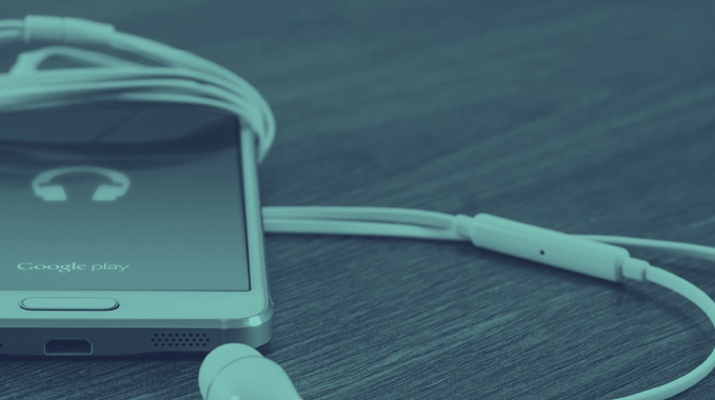
App Monetization Using the Freemium Business Model
Thinking of monetizing your mobile app? Here are 7 ways you can use the freemium business model for app monetization.
If you have created (or want to create) an app, chances are you want to monetize it too.
While a paid app seems like a great way to make money, it’s not the most popular business model for mobile apps.
Not everyone wants to download a paid app. Google Play is home to over 3 million apps, while Apple’s App Store boasts a figure of around 2.2 million, and only 8% of those apps are paid.
The freemium business model is currently dominating the entire app market. It’s a mix of free and premium. This means your app is free to download but offers some paid, value-add services too.
The secret to getting a million people to pay for your app is getting a billion of them to download it – and freemium lets you do just that. Free downloads can get you an expansive user base, which you can then recruit to pay for added features.
In this article, we will explore some of the different strategies you can use to monetize your freemium app:
- Virtual currencies
- Payment for unlocking new levels
- Limited time offers
- Free trials
- Discounts on long-term subscriptions
- Multiple subscription plans
- Ad-free subscriptions
In-App Purchases
Offering app features that users have to purchase to access is one way to monetize your app using the freemium model.
In-app purchases can be either consumable or non-consumable.
- Consumable purchases are features that you can access for a limited time and must eventually renew
- Non-consumable purchases are features you only have to pay for once; they don’t have an expiration date.
Here are 3 examples of in-app purchases that businesses use to monetize freemium apps.
1. Virtual Currencies
Gold coins, berries, or points you exchange while using a mobile app are examples of virtual currencies.
Gaming apps in particular often feature virtual currencies users earn by playing the game and winning or purchasing.
For example, one game has a coin shop: 400 coins is about $2, while 10,000 coins are about $25.
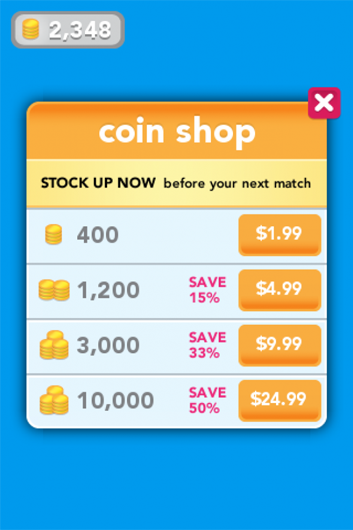
Most virtual currencies are consumable: if you run out of gold coins or berries, you must purchase or earn them again.
Candy Crush Saga is another example of an app that encourages players to pay by offering coins.
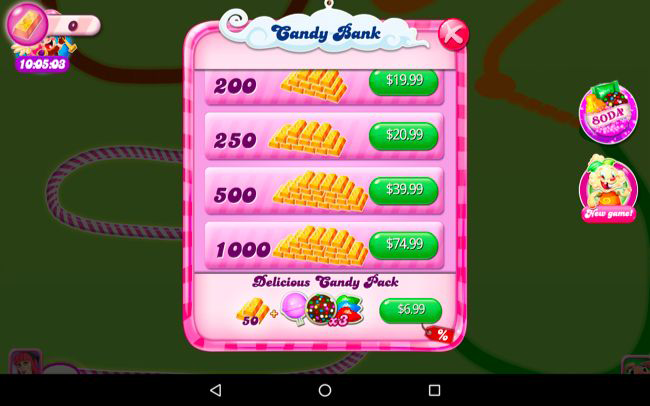
The app lets users purchase gold bars with real money, and use them for in-game boosters such as extra lives. However, the game continues, even if you don’t purchase more gold bars – you just have to wait several hours to get back your lives.
2. Unlock New Levels
Another opportunity for in-app purchases is paying to unlock new levels in games.
Puzzle game Heart Box uses the unlock new levels strategy to encourage its audience to pay.
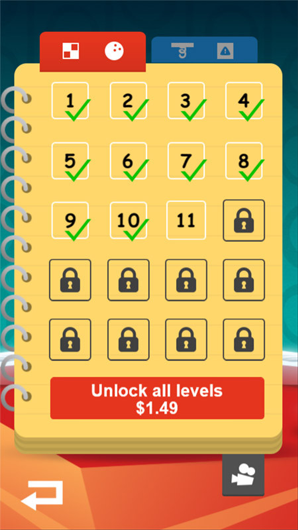
Unlocking new levels by paying money is a non-consumable purchase. Once a user purchases to unlock a level, they can access that level as long as they have the app. There is no expiration date on that particular level.
3. Limited-Time Offers
Encourage app users to pay by offering special, limited-time in-app perks such as the ability to skip a level or buy exclusive coins.
Car racing game EA Real Racing offered promo codes for a limited time.
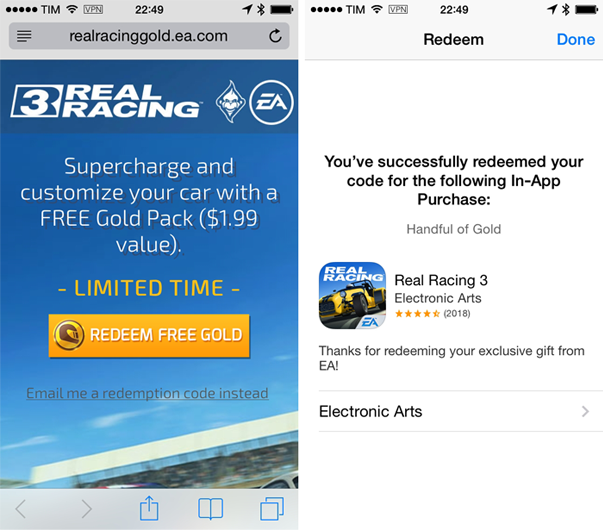
While EA Real Racing is a game app, businesses can apply this technique by offering special features at a low price for a limited time. For example, a starter discount such as a free trial may hook new users and convince them to make purchases to continue using your app.
Subscriptions
Paid subscriptions are another way to monetize your mobile app. They allow users to access certain features or services by paying a weekly, monthly, or annual fee, similar to a newsletter or magazine subscription.
For example, popular music app Spotify charges a monthly fee for users to access songs without ads.
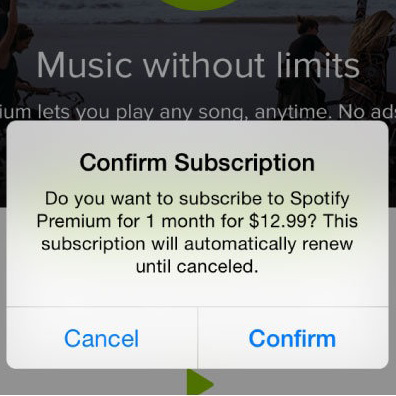
Subscriptions are ideal for businesses that continuously update their content.
Here are some common types of subscription-based strategies you can use to make money with your mobile app.
4. Free Trial
A free trial gives your users the chance to try your app before paying for a subscription.
To ensure new users purchase a subscription after their free trial is to make their first experience as useful as possible.
Additional Reading: 5 Best Practices for App User Onboarding
YouTube Red lures new customers by offering a free, 30-day trial and communicating its value with a clean, eye-catching design:
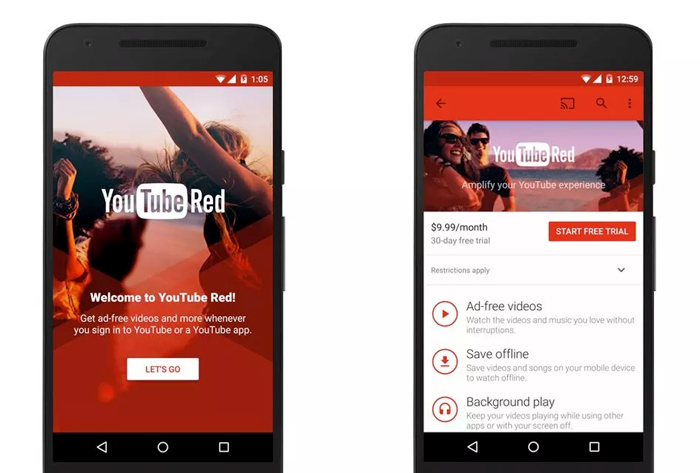
Be generous with the length of your free trial. You have to give users enough time to get used to your app. For example, YouTube Red lets users try its app out for a month before asking them to pay.
5. Discounts on Long-Term Subscriptions
Encourage users to invest in long-term subscriptions instead of shorter one by offering discounts on long-term plans.
For example, the grocery list app Buy Me A Pie offers a 50% discount on its lifetime subscription.
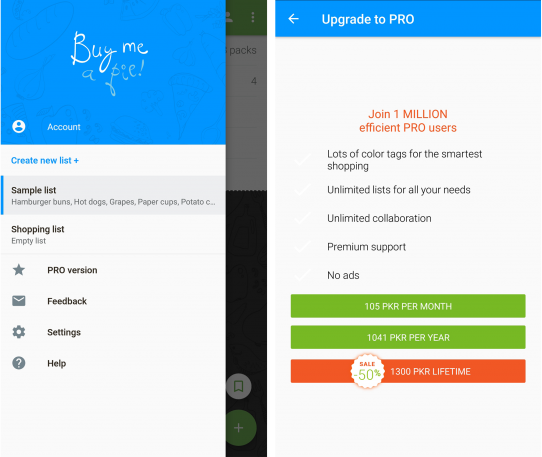
It’s true. Shorter subscriptions might bring you more money. But long-term subscriptions significantly reduce your churn rate.
Users who pay for longer subscriptions are less likely to stop using your app while their plan is still active because they want to avoid wasting money.
Another clever strategy for retaining app users is to offer special discounts that extend their subscription after it ends. To make your offer look more appealing, try showing users the amount of money they are going to save by taking the discount.
6. Multiple Subscription Plans
If you’re using a subscription-based app monetization strategy, consider offering multiple plans.
Not all your customers are the same. Some might want to pay smaller amounts, while others might be comfortable paying upfront for the whole year. You have to do your best to accommodate all types of users.
When it comes to offering different plans, try using multiple durations such as weekly, monthly, annually, or a lifetime. You can even try offering 1-day and 7-day plans like Hindi music app Saavn.
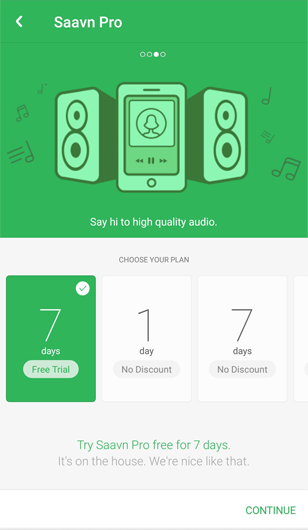
You can also experiment with multiple levels of subscriptions, with higher levels offering more features. For example, Netflix offers monthly subscriptions at three price points – $7.99, $10.99, and $13.99. Each includes different features based on user preferences.
7. Ad-Free Subscription
The most popular way to monetize any app, including freemium apps, is to use advertisements.
However, you can always offer an ad-free subscription for users who don’t want to see ads on your app.
For example, puzzle game Heart Box gives users the option to remove ads for $2.39.
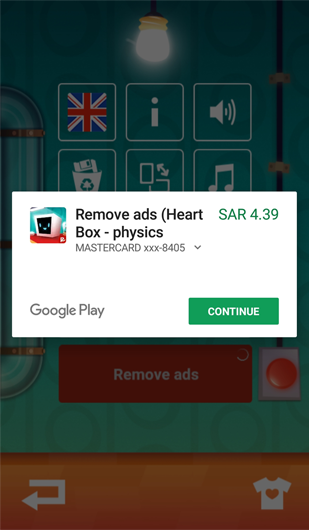
With so many apps on the market, the freemium business model paves the way for businesses to attract and retain users while still making money.
The strategies listed above are just the start. Get creative and take inspiration from other successful businesses to find out how they monetize their freemium apps.
